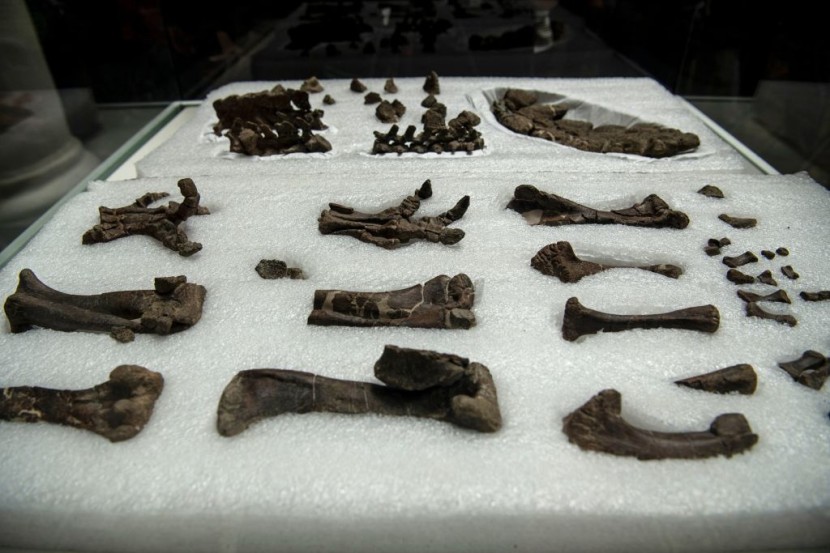
Five years after it was found by a student, an exceptionally rare pterodactyl - a large flying reptile from the Jurassic period - was displayed at the National Museum of Scotland.
The pterosaur, as it was formally known, had a wingspan of 2.5 meters and lived for almost 170 million years.
World's Largest Jurassic Flying Reptile Fossil Discovered
Archaeologist working on the prehistoric specimen have praised it as the best-preserved pterosaur skeleton discovered since naturalist Mary Anning's Jurassic discoveries in the early 1800s. The fossil, discovered in 2017 during a National Geographic Society-funded dig on the Isle of Skye, was just recently added to the museum's collection.
On the excursion, supervised by Prof Steve Brusatte of the University of Edinburgh, Ph.D. student Amelia Penny discovered the creature's sharp-toothed jaw in a stratum of old limestone on Skye's coast.
The fossil was subsequently extracted from the rock by a meticulous procedure directed by Dugald Ross of the Staffin Museum, which involved the use of diamond-tipped saws to cut it out of the rock. The skeleton was then examined at the University of Edinburgh, with the team's results being published in the journal Current Biology.
The organism was discovered to be a new species, according to the investigation, which was directed by fellow Ph.D. student Natalia Jagielska. The giant-winged mammal also has huge optic lobes, indicating good eyesight, according to CT scans, Independent reported.
Read Also : A Man in Spain Dies After Accidentally Trapping Himself Inside a Dinosaur Statue While Retrieving a Phone
Expert: Fossil Is discovery of The Century
Pterodactyls, or huge winged creatures, are closely linked to dinosaurs and had a wingspan of more than 2.5m (8.2ft), equivalent to that of an albatross. Pterosaurs grew to the size of fighter aircraft during the late Cretaceous period, the time of Tyrannosaurus rex and Triceratops. However, this is the first evidence that they grew to enormous proportions throughout the Jurassic period.
Natalia Jagielska, a Ph.D. student at the University of Edinburgh and the primary author of a new publication showcasing the fossil, called the discovery "a discovery of the century" while speaking about it.
Prof. Steve Brusatte, personal chairman of paleontology and evolution at the University of Edinburgh, described the finding as a "superlative Scottish fossil," with bones "featherlight" and "as thin as sheets of paper." Prof. Brusatte claimed that the fossil took several days to carve out of rock.
Pterosaurs, 50 million years before birds, were the first creatures to develop powered flight. They existed as far back as the Triassic period, some 230 million years ago, in the Mesozoic era, also known as the "age of reptiles," according to The Telegraph via MSN.
Pterosaurs had previously been small, with many being around the size of a seagull, until Dearc's time. Scientists previously believed that pterosaurs did not attain Dearc's size until the Cretaceous period, almost 25 million years later, when animals like Huanhepterus, Feilongus, and Elanodactylus appeared. Quetzalcoatlus, which first appeared around 68 million years ago, had a wingspan of roughly 36 feet (11 meters), similar to that of an F-16 fighter.
Dearc coexisted with a zoo of plant-eating and meat-eating dinosaurs, early mammals, and sea reptiles. Dearc was discovered in 2017 after the tide had gone down, with the fossil thrusting out from a limestone intertidal zone. They used hammers and chisels at first, then diamond-tipped saws to fight the tide. However, the tide came in before the skeleton could be completely retrieved, as per New York Post.
Related Article : New Dinosaur Species Dated Back to 125 Million Years Discovered in China in Perfect 'Life-like' Postures
@YouTube








